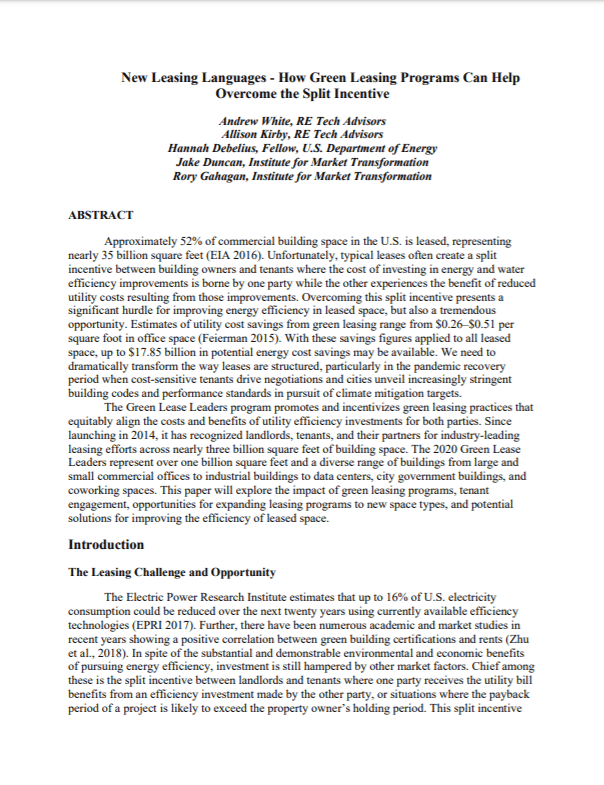Approximately 52% of commercial building space in the U.S. is leased, representing
nearly 35 billion square feet (EIA 2016). Unfortunately, typical leases often create a split
incentive between building owners and tenants where the cost of investing in energy and water efficiency improvements is borne by one party while the other experiences the benefit of reduced utility costs resulting from those improvements. Overcoming this split incentive presents a significant hurdle for improving energy efficiency in leased space, but also a tremendous opportunity. Estimates of utility cost savings from green leasing range from $0.26–$0.51 per square foot in office space (Feierman 2015). With these savings figures applied to all leased space, up to $17.85 billion in potential energy cost savings may be available. We need to dramatically transform the way leases are structured, particularly in the pandemic recovery period when cost-sensitive tenants drive negotiations and cities unveil increasingly stringent building codes and performance standards in pursuit of climate mitigation targets.
This paper explores the impact of green leasing programs, tenant engagement, opportunities for expanding leasing programs to new space types, and potential solutions for improving the efficiency of leased space.
Co-authors include:
- Andrew White, RE Tech Advisors
- Allison Kirby, RE Tech Advisors
- Hannah Debelius, Fellow, U.S. Department of Energy
- Jake Duncan, Institute for Market Transformation
- Rory Gahagan, Institute for Market Transformation
A recording of the report’s findings is also available here.
